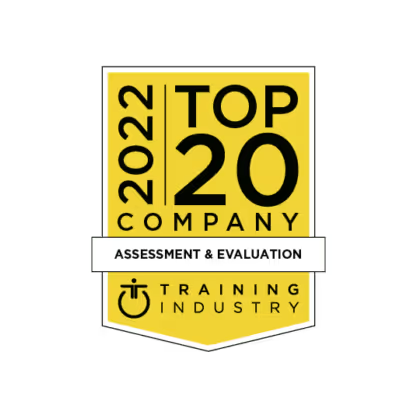Blog Posts


Killer app your sales force
Every decade has its iconic video games. Whether it was Pac-Man, Super Mario, Call of Duty, or MineCraft – among many others – everyone can remember the hot new game that thrilled the generation.
The platform didn’t matter. Atari, Xbox, or Wii – it was all about the game. It still is. Console makers and game designers know this well, so the competition is fierce when it comes to creating the next killer app.
But killer apps aren’t just for video game players. When developing your sales reps, a killer app—defined as “a computer application of such great value or popularity that it assures the success of the technology with which it is associated broadly”—can be transformative. In today’s world, the old ways of selling are no longer sufficient. To be successful, reps need to adopt a new, data-driven way of working.
However, this transformation does not come easily. Unfortunately, sales reps are not exactly longing to open Salesforce or PowerBi to spend a couple of “joyful” hours analyzing data, extracting insights, and defining a course of action to improve their results.
Sales reps who make the shift to this new way of selling, though, see huge benefits in both their productivity and bottom-line results. So how do you motivate all sellers within your organization to adopt this new way of working? This is where the killer app comes in—you need to codify how sellers access datasets and support the new approach with powerful use cases for increasing sales success, so that salespeople see the benefit of changing their ingrained behaviors.
What’s in the way of adoption?
There are two common arguments salespeople make as to why IT system adoption doesn’t happen.
- “I am not good at using technology, and every year a new tool comes out, I just cannot keep up.” This is only half-true. Often times, reps will reveal that they tried to open the system just once or twice, felt lost and overwhelmed by the complexity, and gave up.As one CTO described: “With IT, you need to get your hands dirty to learn and see the potential of the tool.” In this case, reps’ hands are clearly spotless.
- “I am a people person… I want to be in the field talking to clients, not entering data into the CRM and analyzing them. Sales calls is what delivers results. I am not sure how the new IT tools will help me with that.”
As one CTO described:
“With IT, you need to get your hands dirty to learn and see the potential of the tool.” In this case, reps’ hands are clearly spotless.
This second argument would be reasonable if salespeople’s roles were purely relational – however, in today’s world that is not enough. The best salespeople are great at both everything that is client-facing, and at leveraging IT tools in order to help them make better decisions about their sales activities and build better insights to communicate their unique value to each customer.[1], [2] Unsurprisingly, better value also leads to better client relationships.
Still, many companies today have to deal with a change-resistant sales force that fails to recognize the potential of the data and tools they have at arm’s reach. Most sales forces continue to work based on their intuition and what they remember from past wins. So how do you shift your people’s mindsets so that they make more data-driven decisions?
Connecting the case for change with the power of the killer app
Shifting mindsets takes time, energy, and persistence. It requires a multi-dimensional approach to change management, and often calls for multiple rounds of training, coaching, and mentoring to make changes stick.
While this may seem daunting, embarking on the journey to enable your salespeople to be more data-driven can produce incredible results. In fact, research shows that 56 percent of CEOs whose organizations shifted toward a digital transformation experienced increased revenue.[3]
So how do you get there? Combine a change management strategy with the power of killer apps is a great place to start. Begin by asking:
- What is the outcome you are trying to achieve for your salespeople? Why is better IT tool adoption the solution?
- What are possible killer apps for your salespeople to use to get where you want them to be? These can take the form of a dashboard or set of instructions on how to leverage the company’s IT tools (CRM, PowerBi, Sales Enablement, etc.)
- What are related use-cases that leverage data or insights, which will encourage sales reps to seek out IT tools and change how they work and think?
There are no easy answers. What you come up with will be contextual – it will depend on your company’s industry and unique needs. Here are two examples of organizations that have leveraged the three points above:
A global player in the paper industry wanted its sales reps to be more prepared for meetings with important clients. They created a killer app in the form of a report to better understand recent shift in SKU volume that made up the bulk of recurring orders from clients. These patterns made it possible for the rep to figure out if a competitor was aggressively pursuing the same client, or ask the client what was behind the SKU change.
A global player in animal pharma is in the process of deploying their new onmichannel strategy. Their killer app aims to provide sales reps with analytics on interactions between veterinarians and the company, which includes their engagement with communications delivered through multiple channels—emails, calls, and meetings. These insights will enable sales reps to activate the best omnichannel strategy to connect with their prospects and clients. For example, after a face-to-face visit, the rep will be able to see that a veterinarian opened 80 percent of emails, but never engaged in calls with the Inside Sales team. As a result, the rep will be able to make an informed decision about the best next touchpoint—whether it is sending an email, or following up two weeks later with another visit.
These two examples demonstrate how a killer app – and its related use case – need to be specific to each organization.
Bringing your sales force along on the killer app journey
After selecting your killer apps, it’s critical to ask, how can your organization codify it and cascade it internally to drive adoption?
- Start by listing the KPIs your salespeople care about (net sales, growth, frequency of visits, etc.) and identify the key decisions that can help improve that KPI. For example, if the KPI is sales in a specific client segment, underlying decisions might be the number of touchpoints or demos of a new product.
- Define and explain the killer apps – and their related use cases – to help your salespeople make those important decisions based on the data in the system. This can take the form of a killer-app playbook – a document encompassing all of your killer apps and their use cases for different roles in the sales force. Pro tip: define when these killer apps need to be accessed, whether at specific moments (e.g., gauging a territory’s potential at the end of each quarter) or continually (e.g., before daily visits to important clients). Doing so could, for example, provide visibility into product demos that others on the sales team have already run for a particular client, making it easier for a sales rep to more effectively allocate their time and run demos for less frequently touched clients.
- Codify an easy way for salespeople to dig into the IT system and extract the data they need for a specific use case, and build a set of steps to analyze the information. Again, this is core to the killer app and can take the form of a dashboard or a set of instructions to follow in the IT system. Keep it straightforward to avoid overwhelming the sales team: two to three killer apps and related sets of instructions will be enough to start.
- Bring your salespeople onboard, engage them to discuss why they should change (emphasize the connection between killer apps and relevant KPIs), what is in it for them (highlight success stories and the possible cost of inaction), and how to do it (leverage gamification to make adoption fun, and use recognition as an incentive to encourage implementation of the new tool). Enabling this change also means setting the sales managers up for success as internal champions and adoption coaches for salespeople.
This kind of transformation doesn’t happen overnight. It requires an iterative approach—with frequent reviews and expansion as your sales force grows in confidence—and a recognition of people’s different reactions to change, which is called an “XY Sales Transformation.” Developing this culture around sales tools will prime your team to adopt more sophisticated killer apps in the future, resulting in better planning, more insightful conversations, and higher sales performance, among many other benefits.[4]
Though it may be easier to convince someone to try a new console to play their favorite video game, creating killer apps for your salespeople can go a long way in shifting reps’ mindsets and promoting action. Eventually, IT systems adoption has largely to do with the people side of sales strategy – it is still about “getting your hands dirty.”
References
[1] A Theoretical Review of CRM Effects on Customer Satisfaction and Loyalty. Shaon, K.I.; Rahman, H. Central European Business Review; Prague Vol. 4, Iss. 1, (2015): 23-36.
[2] Sales Technology Orientation, Information Effectiveness, and Sales Performance. Hunter, G.K.; Perreault, W.D. Journal of Personal Selling and Sales Management; Vol. 26, Iss. 2, (2006): 95-113.
[3] Gartner.com/en/newsroom/press-releases/2017-04-24-gartner-survey-shows-42-percent-of-ceos-have-begun-digital-business-transformation
[4] Why Sales Reps Should Welcome Information Technology: Measuring the Impact of CRM-based IT on Sales Effectiveness. Ahearne, M.; Hughes, D.E.; Schillewaertb, N. International Journal of Research in Marketing; Vol. 24, Iss. 4, (2007): 336-349.

How to negotiate a price increase
Your company just asked you to negotiate a price increase with your customer based on the recent market conditions. It might be the first time that they’ve asked you to do this. But in some cases, this request could be the first of many.
Price increases are never easy to bring up with potential or existing customers. There are numerous reasons why these can even make the most seasoned sellers uncomfortable:
- “My customers are struggling with their own margins and now I’m asking them to increase costs and possibly shrink their own margins further?”
- “This is the fourth time this year that I have had the same conversation with my customer.”
- “It’s not a comfortable situation for me. My customer tends to get upset and threaten to find other suppliers.”
And there are many more. The bottom line is that this is an uncomfortable conversation. So, what can you do to make a more compelling case?
- Negotiate on something other than price.
When it comes to negotiating price increases, sellers tend to negotiate on a single variable… price. In most conversations, you might hear “your price is too high” or “you need to lower your price to stay competitive.” Instead, think about other variables you can explore to help further the conversation.
Consider ways to create value for customers other than price, such as:
- Volume or share achievements
- Specifications on certain products
- Warranties or guarantees
- Contract terms
- Delivery term
- Trainings or support
Ultimately, retaining the customer will come down to the value that you’ve demonstrated and the relationship you’ve created. - Understand your customers’ position.
To make a compelling case for raising prices, you’ll need to present the other ways you create value for customers in a way that is meaningful to them. This starts with understanding the customer.
Ask yourself:
- Why do they have this position?
- What are their interests in this position?- Is it a company mandate?
- More importantly, is it important to them?
Once you can answer these questions, you will have a very clear understanding as to the “why” behind their position – in other words, the root cause behind their issue with a price increase. By developing this understanding, you can identify the other avenues for creating value that are meaningful to them and whether it is something the organization values highly. If the answer is yes, and you’ve found a variable that is important to them, you should be able to trade for equal value. You get the price you need, and they get the value that matters most to them. - Above all, trust.
The last factor in navigating a price increase conversation is trust. A seller’s ability to build trust with their customers is necessary for helping reduce the fear, uncertainty, and discomfort involved with price increases. However, trust isn’t something you can earn once and bank on indefinitely. It is constantly being evaluated. Expect your customers to be thinking about your:
- Capability and competence levels in interactions
- The reasoning behind why you are taking a certain action
- Responsiveness to past challenges
- Knowledge of their business and needs
- Level of curiosity around their current state
The level of trust between you and your customers will accelerate or inhibit your ability to influence them and properly position a price increase. Make sure that you are constantly putting in the work to build trust so that when the time comes to raise prices, your customer is ready and willing.
In a recessionary and high inflation environment, price increases are only to be expected. However, by negotiating on something other than price, knowing what your customer values, and establishing trust, this challenging conversation will be significantly less difficult.

BTS and Clients win 44 Brandon Hall Group Excellence Awards in 2022
STOCKHOLM, SWEDEN and SAN FRANCISCO, CA – BTS GROUP AB (publ), a world renown strategy implementation and consulting firm, won 44 Brandon Hall Group Excellence Awards in partnership with clients. These awards represent some of BTS’s best and most innovative solutions crafted in partnership with clients, including:
- Abbott
- Accenture
- Air Liquide
- Anglo American
- Astellas
- Bayer AG, Crop Science division
- Blackmores
- Colgate-Palmolive
- Discover Financial Services
- FirstRand
- Grifols
- HP Inc
- ING
- Mondelez Global LLC
- Mubadala Health
- National Australia Bank (NAB)
- Repsol
- Salesforce
- Santander Portugal
- ScotiaBank
- Standard Bank
- Symetra
- Vale
- Vodacom
- Zebra Technologies
“We are very grateful to be recognized for our partnerships with clients,” said Rick Cheatham, CMO at BTS. “Amidst the past few years of constant, accelerating change, we are honored to have the privilege of continuing to grow with our clients. Our ongoing collaborations to deliver best-in-class solutions, whether virtually, in-person, or in a hybrid environment, are a testament to the trust and strength of the relationships we’ve built together.”
These awards include 21 gold, 14 silver, and 9 bronze, ranging from Best Advance in Leadership Development for Women to Best Learning Program Supporting a Change Transformation Business Strategy. Find the full list of winners here.
“Excellence Award winners distinguish themselves through their growing understanding that all the functions of HCM are integrated and must work together to move businesses forward,”
“It is a pleasure to see more organizations collaborating across functions and getting more sophisticated and accomplished at delivering measurable benefit through ground-breaking HCM practices,”
“For example, it was inspiring to see how diversity, equity and inclusion initiatives are increasingly embedded into people and business strategies and cultures. We saw more alignment between HCM and business objectives than ever before.”
said Brandon Hall Group Chief Operating Officer Rachel Cooke, leader of the HCM Excellence Awards program.
Entries were evaluated by a panel of veteran, independent senior industry experts, Brandon Hall Group analysts and executives based upon these criteria: fit the need, design of the program, functionality, innovation and overall measurable benefits. Excellence Award winners are scheduled to be honored at Brandon Hall Group’s HCM Excellence Conference, Jan. 31-Feb. 2, 2023, at the Hilton West Palm Beach, Florida. Select winners also will serve as presenters in breakout sessions, sharing their leading practices during the conference.
“Our award winners demonstrated the vision, agility and innovation needed to excel in the unchartered hybrid work environment,”
said Brandon Hall Group Chief Executive Officer Mike Cooke.
“We added and revised awards categories to ensure that we not only validate best HCM practices but also solicit and recognize next practices that set a high bar for everyone.”

Generations of your leaders have never experienced a recession in their professional lives. Are you ready?
What we do know is that a recession is coming – the current geopolitical conditions foretell the future: rapid inflation, spiking interest rates, political unrest, and resulting supply chain issues, as well as the ongoing challenge of a highly contagious virus that will most likely never go away.The writing is on the wall. At some point, the economic cycle will turn, and the economy will begin to decline or continue to stall.Recessions happen all the time, it's a normal part of the economic cycle. However, what’s particularly interesting about this environment is that it will likely be the first recession that members of Gen-Z and most Millennials have ever experienced – that is, aside from the initial shock of Covid-19 pandemic. Any Covid-induced economic shrinkage was more of a disruption than a true recession. This type of downturn can be described as “V-shaped,” or characterized by a short duration and swift recovery (for example, Western economies’ post-pandemic growth, driven by lower interest rates, constrained supply, and government stimulus).Under the current economic conditions, the recession ahead is classic both in the sense that companies are cutting costs and delaying investment in anticipation, and that its causes can be attributed to external factors. Younger leaders are facing a new, but not entirely unfamiliar, challenge.Over the past few years, Millennial and Gen-Z leaders have risen through the ranks, taking on significant leadership roles across all industries. During the pandemic, these leaders leveraged their tech savviness to weather the challenges of working from home and the shift to a hybrid-virtual environment. Now, new generations of managers and leaders will experience this set of recessionary economic conditions for the first time, and it’s impossible to predict what will happen.What we do know is that a recession can change many things, from the obvious to the less obvious. Let’s start with the obvious. Companies will quickly look for ways to conserve cash and protect margins, which often means slowing spending, layoffs, and restructuring to cut costs. Tech companies that boomed during the pandemic have started to reduce spending and announcing hiring freezes, signaling for companies in other industries to do the same. Jobs will be at risk. If you cannot prove a good ROI, your project is at risk. There are no longer unlimited resources to try out new ideas, and emphasis shifts from growth to profitability at all costs. An increase in uncertainty will make companies more conservative and tentative. All these are well-known dynamics.Less obvious is the impact of increased uncertainty on people. Coupled with rising fear in general, volatility is the name of the game. Your investments just lost a lot of value. High inflation means that your purchasing power, and the new house that you stretched for, are declining in value. You’re worrying about your job, or are not getting the bonus you banked on.The combination of fear and an increase in messy information escalates your “cognitive load,” or the need to tap into your cortex. Responses triggered by fear force you to call on more ancient and less intelligent parts of your brain, effectively reducing your IQ and decreasing the thoughtfulness of your decision making. The solution? While your brain is triggered to respond with its most animalistic “fight or flight” parts, you need to be smarter about navigating your new work and home life.What are the implications of this on organizations? For one, fear responses may decrease teamwork and collaboration while increasing peoples’ self-interest (aka – the burning need to keep their job). At a time when teamwork and tapping into everyone’s intelligence is more important than ever, external stresses will likely drive your team to be less than their best.Given this understanding, as a leader, what are you doing to build resilience in your teams? How will you help them tackle this uncertainty and thrive? Resilience can be built on both an individual and team level through intentional coaching and practice. Cultivating these behaviors not only builds a better workplace culture — it also gives your people the tools to bounce back.You may also need to develop a recession playbook that helps you map out how you’ll support your people while also driving the business forward. It’s no easy feat, but remains critical as you move forward during this challenging period.One practice we know helps build team and organizational resilience is something we call Future Storming. Future Storming is the process of preparing your business leaders from the “future-back” rather than “today-forward.” This means anticipating trends that have yet to occur and envisioning how they might intersect in surprising ways. This exercise, which can be practiced by leaders at all levels, helps them build the capacity to navigate uncertainty, strengthen collaboration with diverse stakeholders, and bolster your business’ capability to manage risk and uncertainty.For example, you can run Future Storming exercises where your team thinks holistically across business silos about where the industry, customer trends, technology, and competition will be three, five, or ten years in the future. As your team evaluates the intersection of these trends, they build the capacity to mitigate risk and uncover insights that provide opportunities for innovation. The focus on opportunities is essential, as recessions can be rocket fuel for disruptive ideas and startups. Furthermore, customer buying criteria changes during recessions, and can upend traditional relationships.A good example of this disruption is Airbnb, which was born during the 2009 subprime mortgage crisis. In a time when many were strapped for cash, but had a few extra rooms to spare, it offered people the opportunity to gain an extra source of income by renting out their extra rooms or vacation homes. By injecting a new supply of affordable short-term rentals into the market, Airbnb disrupted the hotel industry and drove down hotel costs. The hospitality industry was already primed for disruption; the recession was just the multiplier.In the next recession, which new, disruptive companies will thrive, and why?Lastly, how can you empower the new generation of leaders to drive the cost and cash flow initiatives needed in your organization? Your team needs to be capable of contributing to improved cash flow ahead of time or just in time. This requires strong business and financial acumen to understand how their decisions will need to change in tighter times to free up cash and realize better margins or returns, while simultaneously continue innovating and testing out new ideas to drive the business forward.Are your young leaders ready and capable of doing this? Have you developed them to be effective in such a scenario? Up until now, Gen-Z and Millennial leaders have focused almost exclusively on growth. Moving forward, they need to focus on margin, cost, asset utilization, and cash flow. While in growth mode, investment dollars for innovation were plentiful, but now disciplined innovation is the name of the game. These leaders need to be prepared to fail fast and cheap, and move with agility towards the better innovations and investments.In good times, leaders may not be aware of how the decisions they make every day at work impact margins, but in a recession, leaders need to be hyperaware of how they spend time and resources. Furthermore, funding is easy to come by in the name of growth, but in a recession? Not anymore.Learned future preparation, resilience, and the financial proficiency and confidence to drive cashflow are critical for success in this new environment. By providing tools, expectations, and discipline now, you can inspire your young leaders to take control of the future. Instead of acting rashly when the increase in uncertainty tricks brains into inaction, acting ahead empowers your leaders to drive the improvements required to be successful.It’s time to get ready. It’s time to prepare your leaders to flourish in tough times. Prepare your team to storm the future by building the resilience and confidence necessary to make good business decisions when they are in the eye of the storm, all in the name of managing through this recession. Better yet, give them the skills to innovate new products, services, and business models to propel your organization forward, and do it all while using the smart part of your brains.

Future-proofing your company is a team sport
There’s an entire generation of leaders today who have never led through a recession. Now, faced with raging inflation, tumbling profits and volatile stock prices, they are flummoxed. While this is not another global pandemic, there are whispers in the wind that troubled times are coming. How can you help your teams work together in an agile way to prepare for whatever is next?There are lessons to draw from winners post-COVID who seemed to nimbly navigate the last crisis, and those that lumbered and bumbled their way through.Among the losers were those that didn’t just get it a little wrong – they doubled down on a single bet. They kept rolling the dice at the same table despite the odds that their “luck” could run out.
- Peloton produced more bikes than people wanted and were left peddling in the wind with quality issues and a saturated market for their product.
- Bed Bath and Beyond bet on branded goods instead of investing in technology that would have brought loyal shoppers online to buy goods for staying home and feathering their nests.
These companies looked like early winners, and yet the falls were more spectacular than the rise. They had a plan. They were aligned. Where they failed was in imagination. Marching in lock step they went right over the edge.Why it’s easy to go over the edgeIn hindsight we can see mistakes. But how does a smart team keep from outsmarting itself? It comes down to a discipline – avoiding the tendency toward group think and coalescing around one possibility.Breaking the cycle to think differently togetherBreaking this cycle of group think is difficult, but there is too much at stake not to do it. The discipline that saves the smartest, most successful organizations in times of uncertainty is a dedication to scenario planning.Scenario planning is both a process and a discipline that enables your team to imagine “what happens if…” by reflecting on the variables for your business and speculating with the best of your current data and experience how those might play out.With this process your team can go deep and long before events occur, playing out how they might respond. They can then agree on the critical factors that they’ll need to consider as events unfold. They put together plausible scenarios – not only Plans A and B, but also plans C, D, E, F, and G.
Scenario PlanningScenario planning is the practice of creating varying courses of action for a business to implement based on potential events and situations, known as scenarios.It enables teams to challenge their own thinking, consider possibilities, and later, respond dynamically to an unknown future. There are many ways the future may unfold with scenario planning, guiding teams to be responsive, resilient, and effective.The process begins when you define your critical uncertainties and develop plausible scenarios.This requires teams to both apply a sophisticated process and develop the team dynamics and characteristics of agile teams.
Scenario planning is a team sport in that it first requires us to acknowledge no one of us is smarter than all of us. When your team develops this capability, you have the ingredients to become agile. Agility is not so much response to crisis as it is planning to pivot when necessary and knowing what you will do. It may mean changing the metrics by which you’ll measure success so that you can manage through a challenging period.There may be no industry that suffered during the pandemic more than the airlines. Many tried and tried again to “guess” when air travel would resume. CEO of United, Scott Kirby told analysts “We’re not going to pretend we know what demand will be.” After spending months pouring over data, they concluded it couldn’t be done.Instead they assembled a “bounce-back” cross-functional team to consider slow, medium, and fast rebound scenarios. Conversations on cutting costs were scuttled for debates on growth. Many had never met each other or worked together. But they set a goal of becoming a “just in time” organization, looking at options, risks, plans. Through that they placed some bets. The result was a different version of success – liquidity – which enabled them to ride out volatility in demand indefinitely.Why can’t more teams do what United Airlines did? The answer is they can if they know how to get there. There are qualities of leaders and teams that give them the capabilities to work together more effectively and thrive in uncertainty, and tools to support them through the churn. Scenario planning is one of those tools – the most powerful way to ensure your team has the debate before there is a crisis. The difficult conversations have been started, the tradeoffs contemplated, so that when it’s time to act, it feels familiar.Leading a future-proof teamThe role of the team leader is to create space and environment for acknowledging what is unknowable and building a process that moves away from report-outs and political debates to alignment around critical factors and criteria for decision-making.The team needs to be empowered and expected to debate constructively and bring discipline to its decision process. We know from research and through our work with agile teams that there are three qualities of these teams that make it more likely they’ll be able to plan for various scenarios, stay current on the critical factors, and be ready to pivot.Seize the power of Both/And thinking
Both/And Thinking is the ability to hold that more than one seemingly conflicting fact or set of facts may be true, or there maybe be more than one scenario, potential outcome, or impact of any decision.Both/And Thinking in teamwork requires all members to hold for the group the notion that seemingly opposing points of view can both contain truths. For example, it can be true that a recession may be painful, but also positive for your company.To encourage both/and thinking, enable your team to embrace the plausibility of numerous scenarios, as well as options for the best actions based on emerging data. Helping your team to explicitly understand and analyze both sides of the seemingly contradictory truth is a key step forward.
Unlock the creativity that comes with curiosity
In teamwork, curiosity is ability of a team to display humility by soliciting input and other points of view. Curiosity avoids narrow, myopic thinking. It prevents your team from closing ranks at critical moments and helps open the aperture to see all possibilities.To encourage curiosity, insist on questions even from those who have “been there and done that.” Seek to understand, model the behavior by asking questions yourself, even if you believe you know the answer. You never know when the “crazy” idea will be the one that makes most sense.
Make the path forward real through Decision Savvy
All the curiosity and flexibility in your approach won’t mean much if your team can’t make good decisions and move forward together. Agility requires a discipline around decision-making that encourages the team to decide on the criteria for decision before advocating for a point of view. When your team does this, it is far easier to build alignment and get to the right decision.To foster decision savvy requires the leader to insist on taking a step back to ask “what problem are we solving” before the team begins solutioning. This step alone will prevent your team from solving before they get to the heart of the matter. Then, simply ask, “what are the criteria that this decision must meet?” and generate those in writing. Use it as a checklist to consider the various options, and then, tally up how well each potential solution meets the criteria.Scenario planning is not a cure-all for thriving in a recession. But it will give you and your team a multitude of options and a path forward to take now. Perhaps most important, it will change the crisis mentality and alter the chemistry of the team. You’ll be able to meet each challenge head on, with greater confidence, agility, and resilience.

5 mistakes senior leaders make when presenting to other senior leaders
I work with senior leaders who spend a good portion of their time in meetings with other senior leaders.
You’d think that because these leaders are facing similar challenges, at similar levels, communicating and influencing would be somewhat effortless between them. After all, who understands the challenges of senior leaders better than another senior leader?
Therein lies the rub. It’s true that senior leaders share plenty in common with one another, including similar blind spots, which is why the same types of communications challenges often come up between them. Here are of the most common mistakes we see leaders make and how to rethink communicating with your colleagues at your next meeting.
Remember that you’re never there to just inform one another
Bringing a group of senior leaders together is an expensive proposition. It’s why if you’re asking your highest-paid people to meet, it should only be for a handful of reasons: To make a decision, agree on a path forward, address an urgent matter, debate an important idea, and so on. Bringing senior leaders together to simply inform one another, provide updates or discuss problems with no real resolution is low value for them and their organizations. If you want to inform, share a pre-read, or send along a dashboard link.
Focus on how to move from informing to action
To get at this, stop talking about what you’re working on and start shifting the conversation to produce more results to come out of the conversation. If you’re leading a discussion with other senior leaders, always decide what result you’re there to achieve ahead of time: A decision? Agreement on a plan of action? Alignment around a commitment? Then, determine how you’ll achieve the result in the time given. Don’t underestimate how much more impact and value you can immediately create with those two simple steps.
Own the fact that you are there to sell
Producing results is not a neutral activity, which is why if you’re leading a discussion with other senior executives, remember that you’re there to sell your colleagues on a course of action. Just because they are your peers doesn’t mean they want the same things—or that they are automatically on board with your agenda. It’s your job to persuade, to influence, to break through the noise and get this in-demand audience to care. Sharing compelling data and information may be a helpful starting point, but if you’re meeting with other senior leaders, those are table stakes. To win hearts and minds, do more to put your audience at the center and engage them on how your idea will help them win.
Make the audience the star of the movie
Think about your discussions with other senior leaders like movies, and if the star is you instead of them, you’ve lost the plot. To influence, help the audience see how they benefit in the future you’re describing. To do that, storytelling is key. Your executive peers can be the toughest audience a leader can face. It’s all the more important to paint a compelling picture of the future state. Describe the potential opportunity in realistic, credible terms, walk the audience through a path to achieving the future that feels doable. It may be tempting to boil the ocean or go heavy on the doom and gloom language (“we’re going to be out of business in five years if we don’t start now”), but a little goes a long way. Most of us don’t want to star in a depressing movie, so to influence, work on a compelling narrative that your audience wants to be part of.
Play to win
The biggest mistake I see senior executives make with one another in meetings? They play not to lose, instead of playing to win. In practice, this might look like keeping comments safe when sharing ideas, checking out or multitasking, keeping quiet, refusing to challenge each other in meetings, or not holding peers accountable to achieving results in discussions. The impact is that we miss the opportunity to have the types of high value, business-moving conversations that senior leaders can and should be having. To get at this, self-awareness is essential, and it may require you to do more to make sure your leadership voice can be heard. For many, this may require preparing differently, sharing ideas in a bolder way, or doing more to make sure the value of your ideas is obvious to the audience.
There may be no single action a company can take to improve its business more powerful than this: Enable your senior executive peers to engage in high value conversations with each other, more often, because when this happens, the benefits are far and wide. Decisions get made, alignment is strengthened, and that accelerates results for companies. Equally important, when senior executives show up differently for each other, they create new norms, elevate the culture, and set an even higher standard for performance.

What now, recession?
Most CEOs are revising downward their forecasts for business, though they remain reluctant for the moment to declare a recession is at hand. Within the current administration, and in congress, there is broad disagreement about what to do to head it off. This uncertainty is wreaking havoc on business planning. Chief Executive reported in June that 300 CEOs downgraded business forecasts for the next 12 months to 5.6 out of 10. CEOs are telling their people to prepare recession plans.
At the start of the 2020 pandemic, we also lacked foresight to imagine the dramatic swings in the fortunes of companies. There were big winners like technology, retail, financial services, and home entertainment; there were big losers like travel and tourism, hospitality, and energy. The massive shifts in the global business landscape rendered strategic plans out of date and useless.
So, what now? How do we navigate the next big, bad thing?
In 20 years of advising CEOs and senior executives on strategy execution, we’ve learned that during crisis, some teams rise to the occasion, while others are less resilient and more susceptible to doubt, which prompts reaction in the moment and can foster a chaotic sense of doom. While there are winners and losers in industry sectors, it is also true that some defy the odds, look around corners, seize opportunities, and keep steady hands at the wheel.
What kind of leaders weather tough times?
Through a review of our data on leaders and teams, we’ve discovered that inevitably there are qualities of both that drive growth and innovation, even in the most challenging times. These qualities are not always intuitive. In fact, in shorter supply your team is stretched thin, exhausted, and too busy to stop the whack-a-mole game to think clearly and provide direction to others. What do these leaders and their teams do right?
They tap into the stabilizing power of composure and restraint
Leaders who demonstrate a high level of composure and restraint in challenging times create an environment where it is safe to make mistakes, and to tell others when things are not working. Leaders are then able to foster discussion in a calm environment and resolve small issues before they become bigger ones. These leaders get a read on the fast-changing environment and quickly problem-solve with colleagues.
They dial up their antennae of awareness and concern
Awareness and concern are two additional qualities that go hand-in-hand in times of change and uncertainty. As people struggle to navigate the pressures and volatility, it’s more important than ever to know what your team is thinking and feeling, and to be aware of the pulse of the organization. If a downturn is ahead, you may be glad that not every position post-Pandemic is filled. However, the reality for most companies is that their best talent is most at risk and likely to leave. Staying aware helps you shore up your best defense against threats to growth.
They ramp up their curiosity and interactivity
These are two leadership qualities that work together beautifully when you need to solve problems. During challenging times, many leaders turn inward to try to shoulder the burden of solving problems with a ready-fire-aim approach. They hear about an issue and move immediately into action. They may ask for input, but not in group settings. Thus, they put spokes in wheels and their best people are talking only to them; not to one another.
It may feel counterintuitive, but when you can be intentionally curious and convene smart people, you learn that they can solve the problem better and faster than you can. Because they’ve authored the solution, they claim ownership of it and put all their energy behind it. As you move through uncertainty, they begin to feel more confident of their own agency in managing turbulence. As Ken Blanchard once said, “All of us are smarter than any of us.”
They focus on unleashing the capabilities of their interdependent, interconnected teams
Virtual and hybrid work have already laid bare the hidden, destructive issues that can derail relationships and teams. Teams that had less face time and more conflict found the challenge of misunderstanding and unresolved conflict even greater. It isn’t only each team but your network of teams, and how they operate together, that makes your organization resilient.
The performance of teams is vastly more important to the future of work than individual performance. Teams are really the new heroes of organizations. When you see unresolved conflict between teams, you can diagnose, with absolute certainty, the role that the friction is playing in creating drag. As you try to pivot in a recession, it’s time to prioritize how teams in your organization are actively engaging with one another, aligning on the goals, and working with enterprise focus.
Our research on teams has found that in challenging times, trust, support, candor, and curiosity lay the foundation of team culture. Make it a priority to bring people together and resolve trust issues by encouraging candor and looking for solutions. Do this by first being curious yourself, and then encouraging others on your team to seek to understand. Take the time now to ensure that your teams are performing at their best, and you’ll reap the rewards today and well beyond any recession or downturn.
What now?
I remember a CEO that I know telling the story of the commitment he made to retain all of his employees during a downturn, even though he predicted a 20% revenue loss in the first year. That decision, while risky, turned out to be fortuitous, as the economy pivoted and demand soared long before expected. Competitors who had let go of employees struggled, while this company recovered quickly and remains above capacity today.
The decision he made was informed by the values and qualities of leadership that defined this company’s culture. The CEO led by example, demonstrating composure and restraint that others modeled. They spent time talking with their employees about the decisions that they were making and why. They demonstrated concern for their well-being when demand picked up and they were under pressure to deliver.
Take a lesson from this CEO and what we’ve learned about leadership and teams. Keep these three approaches in mind as you move forward:
- Stay focused on what works – good leadership will get you through.
- Double down on your people and your teams – listen, learn, respond, and invest to make sure they have the knowledge, support, and tools to do their best.
- Bring your leaders and teams together to navigate the uncertainty together – forget being a hero and instead draw in your organization to collaborate, cooperate, and invent the future – you will all be stronger as a result.
As the next months unfold, we can all prepare to be better leaders by reflecting on what we already know about leading in uncertain times. Think about what worked and didn’t work over the last two years. Ask yourself: what is the lesson and how can we apply it now?

3 things an executive can do: influencing in passive-aggressive cultures
The Chief Digital Officer (CDO) had a compelling vision for leading a digital transformation that would be critical to remaining a viable competitor in their marketplace. She was hired to deliver on this innovation, and everyone knew that without implementing this vision, the company would not survive for more than four or five more years.
Yet, the CDO could not get her C-Suite peers to have a reasonable debate and reach a decision on a path forward. The rest of the leadership team was avoiding the issue, and her attempts to engage them went unanswered. They weren’t hostile, and in fact expressed agreement on the importance of the change—they just refused to respond and take needed action. Because the company had this “nice” culture that avoided even healthy debate, the CDO was completely frustrated. She was losing ground rapidly, and yet was under the gun to deliver. She didn’t know what to do.
During a coaching session, she said to me, “Do I express my frustration and risk being seen as angry? That will not get me far. So how can I be authentic without upsetting my peers? I am tired of being ‘nice’ and getting nowhere! There are two big non-traditional competitors out there who will eat our lunch if we do not act now. Don’t they see that inaction will lead to the death of the company? I was given responsibility for a mission-critical job, yet no one wants to debate it or make any decisions! I’m going crazy!”
“Nice” cultures: death by a thousand unspoken cuts
The CDO was describing a passive-aggressive organization. These cultures are not rare. In fact, studies have found that over 25% of companies can be classified as passive aggressive. On the surface, everyone is friendly, which makes reaching consensus easy. The problem is that the consensus is really false agreement since it was reached without constructive debate. As a result, few people are really committed to the decision since they gave in rather than buying into the decision. So, everyone drags their feet when it comes to supporting implementation.
A common symptom of false consensus is second guessing. Since team members don’t express their true concerns the first time around, they may bring up a concern or a question later, after you thought the team had made a decision. And since no one likes confrontation, the second guessing brings everything to a halt.
Everyone is pleasant, but nothing can get done. And this can go on for months, if not years. Meanwhile, the company’s competitors are starting to steal market share.
3 things a leader can do
We worked with this leader to plan her path. These three actions, when done in combination, can unlock conversation, collaboration, healthier debate, as well as a way to accelerate your ideas, while navigating the culture of “nice.”
- Make the case – the executive team needs to be persuaded on the value and benefits to move off their position
Explain, in simple language, why the company needs a digital transformation now. Use a few key pieces of data. For example, tell a quick but compelling 2-3-minute story of how a customer filed a complaint because the company’s databases did not talk to each other. Or refer to an industry study that makes the case for the need for a transformation. Show data that is important to your audience – your C-Suite peers.The goal is to show them you need to take action now. - Explore their resistance – understanding what’s behind their behavior helps you to connect to what matters to them
Of course, as you are making your case, your audience is thinking of all the reasons not to take any bold actions.To break the norm of a passive-aggressive culture, it is important to make it safer for people to voice their concerns. You need to understand their resistance, not ignore it. How can you deal with their resistance if you do not know what it is? You want concerns out in the open, rather than buried under a veneer of “nice.” The trick is to create the setting to make this comfortable and productive.
In this case, we coached the CDO to break down the executive team into groups of 3 or 4 people and start the conversation with something like, “You all have heard my plans for a digital transformation. I know I probably didn’t think of everything. Maybe there are some unintended consequences I haven’t considered. Or maybe I am not aware of some data you have. Or maybe parts of my plan seem ambiguous or not clear. In your breakout groups, I’d like you to discuss your biggest concerns and questions. I need to know them so I can make the right tweaks to my plan. Come back with a list of your biggest concerns.”
By doing this, she is giving them permission to challenge her. But, at the same time, she is making it clear she is going ahead with her plan. This process is a good authentic way to display both the humility required in a “nice” culture, as well as the assertiveness needed to get things done.
Hopefully, this type of exercise will yield some insights into their real resistance, which makes it easier to respond to concerns, and possibly adjust your plans to meet their needs. And sometimes you will not be able to meet their needs, but at least they will feel heard, and you may be able to offer an alternative solution. For example, you can say, “I understand this initiative will take resources away from you, but this mission-critical project is in the best interest of the company and will keep us sustainable. Perhaps we can find some way to give you some temporary help.”
By hearing and responding to their concerns, you are increasing the chance of buy-in and hopefully minimizing the second guessing that often comes later.
If you have successfully made your business case (step #1 above) and you have been given the responsibility to transform the company, you do not need to make sure everyone agrees with you 100%. The goal of decision-making, even consensus, is not unanimity, but unity.And once you have that unity – the agreement to proceed with the transformation – the next step is to rally the troops. - Inspire the troops – lay the groundwork to engage and inspire everyone to do their part in delivering on the transformation
Once the C-Suite is united around the vision of the digital transformation, it’s time to get everyone, not just the executive team, on board. Often, a leader can have the right vision, but the troops will stifle execution. Especially in a passive-aggressive culture, a functional or department head may be talking negatively about your vision to their people but saying positive things to your face. Talking to and hearing from people directly eliminates the backchanneling and filter.
One powerful option is to go on a “vision tour” and meet with the various departments and functions to explain the vision and answer questions. For our CDO, ideally, she would be accompanied by the CEO and the department leader.
A successful vision tour focuses on two points:
- Demonstrating how the change will benefit the audience
Everyone probably has a horror story about the current situation that is leading up to the change – it could be something like how frustrated they are when trying to get accurate information quickly, or how their systems do not talk to each other. Share a short story from someone in that function about their pain points and draw the connection to the change. Show how you understand their frustrations and how this initiative will make their work life better
- Giving people a chance to ask questions and express their concerns
Consider convening a virtual or in-person town hall. Ask people to get together in small groups and come up with three questions or concerns. Have a spokesperson from each group take turns sharing a concern. Answer as many of these questions are possible. It is important to be as honest and transparent as you can. If you do not know the answer or need more time to give one, say so, but be sure to get back to the group with a response as soon as possible. By being authentic and honest, people will begin to trust you and see you have the best interest of the enterprise at heart. In passive-aggressive cultures, people are used to leaders saying everything will be fine when everyone knows everything will not be “fine.” You will gain lots of credibility if you are honest with people about the challenges change brings.
And just as important, you will model a way to be “nice” and respectful without the need to avoid difficult conversations.
Be appropriately nice and appropriately assertive
If you follow these three steps, you will greatly increase your ability to influence change. True, you can’t change a passive-aggressive culture overnight. But you can take some actions to minimize the chances that your ideas will be stymied and gently killed by a “nice” culture. Remember, “nice” cultures are really not very nice. As Carolyn McCray says, “You do realize that passive-aggressive behavior is aggressive behavior for cowards, right?” You need to take the fear out of speaking up.
You are expected to lead, so lead. You are also expected to be nice, so be nice. You can do both.

The business case for social impact initiatives
Can prioritizing people and the planet improve your organization’s business outcomes?
Most social impact efforts are viewed as purely altruistic, making it hard to justify anything beyond the occasional “socially responsible” expense. However, by adopting a future-forward mindset and leveraging mindful business approaches, you can offset social impact expenses and improve overall profitability.
Here are three ways social and environmental impact can help grow your business
1. Small steps lead to big changes.
When choosing social impact initiatives to support, take your organization’s values into account and leverage its existing capabilities and assets. These factors will help identify fruitful opportunities for volunteering and sponsorship.
Here’s one example of leveraging existing assets: say your organization hosts a catered event in its cafeteria space. Partnering with a nonprofit catering service, preferably one that’s authorized to repurpose leftovers, creates opportunities for your people to connect with external volunteers. The sum of these interactions may produce your newest clients, candidates, or media promoters.
Another example: a professional services firm that specializes in capability development runs one of its signature programs for non-profit leaders, free of charge. Both parties grow: the non-profit leaders build capability, while the program facilitators gain experience, all in a low-risk environment. Any resulting relationships between participants and facilitators will multiply social impact throughout their networks.
2. Creating a great workplace culture.
Today’s job market is hyper-competitive. One way for organizations to stand out is to be a place where people are proud to work.
Supporting causes that talent cares about — whether by creating volunteer opportunities, sponsorships, or initiatives — will help you win and retain talent. If there are aspects of running the business that may negatively impact people or the planet, consider proactive ways to offset these costs.
For example, carbon offsets — e.g., sponsoring rainforest preservation — can help compensate for environmental costs incurred by business travel. Over time, these partnerships can evolve and enable talent to feel more confident about working without compromising their values. Efforts like these are reasons for mission-driven employees to stay and become superfans.
3. Sustainability simply makes business sense.
Working towards a “greater good” benefits how your organization is perceived by stakeholders (including talent, clients, and investors), which may result in unforeseen opportunities. This is critical for organizational longevity, which requires sustainability in every sense, whether economic, environmental, or social.
Economic sustainability is a no-brainer: keeping your organization in the black and not the red, year over year, is necessary to stay in business. However, economic sustainability becomes more challenging without environmental sustainability, as all organizations rely on the planet to provide. It’s the place where we all work, live, and grow.
It is in every organization’s best interest to focus on environmental sustainability, because long-term access to natural resources is necessary for any organization to succeed, or even exist, in the future. Failing to mitigate the costs incurred on the planet will obstruct day-to-day business operations.
Social sustainability is another requirement for success: organizations do not exist in a vacuum. The communities where your employees live and work contribute to creating a productive work environment. Investing in this community — whether by volunteering at a local food bank, or creating internship opportunities for local graduates — yields a safe and mutually-beneficial environment for for your people, your organization, and the surrounding area.
Social impact need not remain an altruistic write-off on your income statement. The business case for doing good includes furthering impactful causes, cultivating a culture that retains talent, and fostering sustainable practices for generations ahead. When these efforts align with your organization’s values and capabilities, they become sustainable drivers of people, planet, and profit for your business.
Measurement is key for ensuring action, so many leading businesses account for the triple bottom line by assessing social and environmental impact in addition to profits and loss. This enables them to remain responsible for decisions that positively impact not only the current and future success of their organization, but also the world we all share.

BTS Insights Sales and Marketing Study
Understanding the culture and needs of Sales and Marketing professionals.
BTS interviewed 100 professionals in Sales and Marketing (including CXOs, sales and marketing leaders, L&D, digital, key account managers, and other commercial excellence roles) from various industries across the globe and identified current trends impacting their sales and marketing organizations.
This document outlines our research findings and best thinking on prevailing customer needs, trends in sales and marketing, and current challenges our clients face today. As we explore various topics, from digital transformation to new ways of selling, we will offer some insights and key takeaways.

Context matters
Context is everything. When you’re swimming in the ocean and see a fin sticking out of the water, your brain concludes: "It's a shark, get out of the water!" But if you're in a pool, you think: "It's a kid with a swim toy that looks like a shark fin." In both situations, the context leads you to reach two very different conclusions and behavioral responses.
How people behave in any given situation is a function of both who they are as individuals (e.g., their personality, skills, past experiences) and the context in which the behavior takes place (e.g., the situation itself). In other words, context matters, and it is difficult to interpret an individual’s behavior without an understanding of the context they faced.
When it comes to using assessments during the hiring process, organizations have a vested interest in making certain that these assessments reflect the organization and job – the context. Doing so helps jumpstart onboarding by ensuring that candidates' assumptions about the organization, the job, and their suitability for both – that they invariably make during the recruiting process – are rooted in reality.
But assessments modeled after the organization and job are superior for another reason: They are generally stronger than generic assessments that cut across job type, level, organization, industry, etc.
- More predictive. First and foremost, the closer the alignment between the assessment and the specific context in which the individual will ultimately perform (i.e., the job at the organization), the better the assessment will do in predicting future job performance. In fact, research demonstrates that highly contextualized assessments have incremental predictive validity beyond situational judgment and job knowledge assessments. This means that even after measuring candidates' job-relevant knowledge and how they would handle particular situations, highly contextualized assessments still reveal candidates' ability to perform the job that we don’t otherwise know from these other tools.
Why is this true? Because the best predictor of future behavior is past performance. For many years, this adage has been dubbed "the Golden Rule of selection." Think about it: What's the best way to predict whether an individual will be a good salesperson at your organization in the future? Answer: Observe them in the job of salesperson at your organization. The only problem in the pre-employment context, however, is that you cannot observe a candidate perform a job they do not have… Or can you?
Assessments designed to reflect the realities of an organization and job often take the form of a simulation – sometimes completely automated; other times involving role plays conducted by trained assessors. In essence, these assessments let candidates "try the job on for size" – explore the situations and challenges faced, engage in dealing with the situations, etc. Such work samples provide the opportunity to, in essence, perform a job that candidates do not yet have, thus enabling conclusions about how they would perform the job if hired.
- Less adverse impact. Not only are highly contextualized assessments, such as simulations, highly predictive of future job success, but they also have lower risk of adverse impact. In fact, a seminal meta-analytic research study – looking across many years of other research studies – found that simulations comprising role-plays or presentations have about 50 percent less risk of adverse impact (i.e., sub-group differences) compared to other assessment tools. This decreased risk of adverse impact translates into a more diverse group of candidates deemed qualified for the job, ultimately leading to a more diverse workforce.
- Higher face validity. Finally, because highly contextualized assessments look like the job, candidates see the relevance of these assessments for the job to which they've applied. Candidates understand why you are asking them to perform some task or answer particular questions because the assessments make sense in their minds given what they know about the job. This is known as face validity, which highly benefits the organization. This underlying concept can decrease the risk of candidates challenging the results of an assessment, improve perceptions and impressions of the employing organization, and increase job offers acceptance rates.
All three areas of highly contextualized assessments are paramount on their own, and together highlight the importance of tailoring pre-employment assessments to the organization and job. They serve the dual purpose of teaching candidates about the job, while also assessing their capabilities and alignment with the organization's needs.
The employment decision is important for both the candidate and the employer, and it benefits both parties to ensure that candidates are assessed in an accurate and authentic manner to make the best, most informed decisions possible.

Face Your Fears and Make Your Workplace Better
Recently, while coaching a frustrated Chief People Officer, he vented to me about his company’s plan to bring back the workforce – 3 days in the office, two from home. The leadership team would prefer to have everyone in every day, but they know that will make it almost impossible to recruit new hires and could further damage their already falling engagement scores. And now, they are struggling with a whole set of new problems: how do they track who’s coming in and when, and what do they do about those who aren’t following the guidelines? Why don’t the employees appreciate that the “gift” of flexibility that is being bestowed upon them? It seems like whatever solution the company offers some portion of the work force is unhappy.In talking with executives, this story comes up over and over. The leaders want things to go back to “normal” – meaning pre-pandemic times – and employees want something else. And they are puzzled by how to respond. Yet when I ask if they are partnering with their employees to find solutions, I often get blank stares in return. The idea of asking employees what they want in this situation seems to horrify many leaders.
Missing a big opportunity for buy in and guidance
Based on my own days as a CHRO navigating this kind of challenge, I am struck by how much these leaders are missing by taking this view. There are clearly so many advantages to involving your workforce in their future workplace! We are all in this together after all – and designing the workplace of the future should be exciting and fun.Imagine the enthusiasm for the outcomes that will follow if representatives of all levels and departments contribute to the solution and the deeper understanding of business needs that would come from their involvement. And by pulling in key leaders, they will benefit as well, because they will develop better insights and respect for the challenges and constraints many employees are experiencing.
Why leaders are afraid
I realize leaders are afraid to involve their workforce when considering their workplace of the future and other changes. Why? I see 3 primary reasons:
- It takes too much time
- Employees may lack the critical business insights needed to make informed decisions
- Participation might lead employees to have unrealistic expectations for the outcome
It’s true, the planning and preparation can take longer, when getting more input and involving more people. And sometimes employees don’t have the “big picture” regarding the business needs. And, if you aren’t careful, participants in the change may have unrealistic expectations. But I can tell you, having had the pleasure to lead many corporate teams that had a balance of members from all parts/levels of the organization, these challenges are easily mitigated. And worth managing, because the outcome will lead to better business outcomes, provide sustainable solutions, and increase employee engagement and commitment.
Paving the way for a quantum give back
I’ve led and watched successful teams help their companies drastically change their performance management approach, implement department re-organizations, enhance their employer brand, and develop new sales strategies. In each case, the additional time upfront saved us time later when we avoided re-work and re-communication due to poorly conceived ideas. We carefully set the stage by explaining the challenges and needs and ensuring that the team consisted of individuals from a variety of levels throughout the organization to ensure a strong business focus.We also made it clear to the participants the criteria and boundaries that were involved, who needed to approve it, and how their recommendations would be managed. I have found time and time again, our employees are grown-ups and if treated that way, will behave that way. They can handle being told no if they understand the “why” behind the “what." In fact, I have had employees approach me after townhalls and other group meetings, where the leadership had to say no to some employee requests, with a handshake and a thank you for being transparent and trusting them to understand and support good business decisions.
Asking your employees for help gets you more than you can imagine
Perhaps my favorite example of a time when a team of employees and leaders worked together to improve the business was with an organization that was working on improving the employee perception of their Diversity, Equity, Inclusion, and Belonging (DEIB) efforts. The company was very committed and had implemented many solutions to ensure improved representation and inclusion for all, and especially for their women and people of color. And yet, they were confronted with a steady decline of employee perception of company commitment to DEIB. To change this perception and make things better, the organization spent months engaging over 100 of their employees and leaders in teams to find ways to improve.Within one year, the organization really moved the needle:
- Numerous organizational and programmatic changes were firmly in place based on the teams’ recommendations and employee perception rose from 78% favorable to 83%.
- Deep friendships and connections were made across those teams and leadership opportunities emerged for many of the employees that participated, an important goal of the initiative in the first place.
- The executives involved were surprised and delighted by the new insights and awareness they gained from the process, as well as the progress made on a complex challenge.
Was one year a long time to take to achieve all of that? I don’t think so.I have been afraid before, too, for the reasons mentioned here. But I promise you, if you take the time to do it right, you will soon forget your fears and find there’s a better way of operating: improving the future with your employees – not doing it for them or to them.

BTS Named to Selling Power Magazine’s Top Sales Training Companies 2022 List
STOCKHOLM, SWEDEN and SAN FRANCISCO, CA — BTS GROUP AB (publ) a world-leading strategy implementation firm, was recently named a Top 25 Sales Training Companies 2022 list.
“We are grateful for this recognition as one of the world’s leading sales training companies,” said René Groeneveld, Global Head of BTS’s Sales and Marketing Practice. “In 2021, BTS continued to deliver world-class solutions in a mostly virtual, increasingly-hybrid environment. Our efforts to support sellers, sales leaders, and marketeers innovate their communications enabled them to reach and exceed their sales goals amid continued uncertainty.
”Companies on the list submitted a comprehensive application, which included their offerings for training and retention, innovative solutions, unique contributions to the sales training marketplace, and response to the COVID-19 pandemic. The main criteria for evaluation included:
- Depth and breadth of training offered
- Innovative offerings (courses, methodology, or delivery methods)
- Contributions to the sales training market
- Strength of client satisfaction
To evaluate applicants for the list, the Selling Power team surveyed and considered feedback from over 340 of their clients. Here are some of the comments:
“Our sales managers that went through the training said it was the best training they had ever received as part of a sales organization.”
“The prep work, training, and follow-up after training are all world class.”
“Outstanding, key to our sales transformation.”
“Not only is the training content excellent, but the delivery and interactivity of the sessions really help participants absorb and apply the techniques.”
Selling Power advises CROs, sales VPs, and sales enablement leaders to leverage the list to find the right sales training partner for success in the hybrid-virtual environment.

Industry acumen for sales effectiveness
Customer empathy is key for sellers who want to win in today’s hyper-competitive environment. This ability to anticipate customer needs, produce thoughtfully tailored solutions, and drive meaningful outcomes for clients is not an innate ability that only a few select sellers possess, but a skill that all sellers need to actively cultivate.Developing customer empathy begins with gaining a deep understanding of your customers’ business, otherwise known as industry acumen. Industry acumen provides the critical foundation for customer empathy by helping sellers identify customer pain points, key goals and metrics, and the critical business drivers and care-abouts for each function within an organization.If sellers and organizations are willing to invest in building industry acumen, they will most certainly reap the rewards. In the case of one cloud services provider, sellers with industry acumen training delivered a 31% higher pipeline than their peers. Facilitating industry acumen leads to bigger, better sales opportunities. So, how do you help your salespeople develop industry acumen?
- Practice makes perfectOne of the best ways to embed new skills and knowledge is through practice. By leveraging role-plays or AI-powered platforms to simulate conversations with customers, sellers learn to “walk a mile in their customers’ shoes.” These simulated experiences immerse sellers in the opportunities, challenges, and strategic decisions faced by executive teams in specific industry verticals. Sellers also gain an understanding of the care-abouts for different functional executives (e.g. Chief Financial Officer, Chief Marketing Officer), overall developing a strong sense of industry acumen.
- Customization is keyEvery organization is different, but individuals within your go-to-market team will likely require different levels of skill-building. For sellers who are entirely new to vertical selling, training must begin by building a foundational knowledge of their industry vertical. On the other hand, there may be members of the team with backgrounds in vertical selling who need a more tailored approach to improving client conversations.It’s also critical to consider different levels of specialization. For example, mastery of the healthcare industry in general may be enough to get by at one company. At another company, however, it may be crucial to drill down on Provider, Pharmaceutical, Medical Device, and Payer verticals to reach the level of sophistication needed to converse with industry executives.
- Collaborate, collaborate, collaborateFor this verticalized, go-to-market approach to be successful, many groups within the company must work together. The sales enablement team can no longer just deliver sales skills training – the team must also work with product management and with marketing to create customized value propositions and use cases for different verticals.
Developing industry acumen is made easier by leveraging simulations, whether standard, self-paced ones or fully customized and facilitated experiences. Investing in sellers’ abilities to connect more deeply with their customers will result in better solutions, which will ultimately lead to larger deals and faster time to close those deals.

Strategy or execution? Four principles for overcoming the senior leader’s dilemma
Senior leaders must frequently choose to devote their time to the company’s long-term strategy or focus on short-term execution. Often, the need for achieving quarterly earnings wins out, and leaders will lean towards the latter. With their time already monopolized by meetings, damage-control, and financial analysis, it’s too easy for senior leaders to slip into focusing exclusively on short-term activities. As one biotech executive said, “I think about strategy on my commute to work and my commute home. I don’t have time during the day.”
Most executives recognize the need to focus on both strategy and execution; however, what remains is how to do so. In an interview with an energy company’s board member, BTS consultants asked, “What makes an ideal CEO?” The interviewee expressed the need for a “bungee CEO” who could move quickly from big picture- to detail-oriented work. "Bungee CEOs" lie at the midpoint between strategy-focused CEOs, who are too far removed from day-to-day operations and struggle to connect with employees, and execution-focused CEOs, who run the risk of being perceived as micro-managers.
At a time when unforeseen shocks such as the Covid-19 pandemic have made it even harder to focus on long-term strategy, here are four principles senior leaders can implement to achieve balance between strategy and execution.
1. Strategic pivots and scenario-planning
In the past, many executive teams thought that rapidly changing a company’s strategic direction would reflect poorly on the team to the board, because that meant the strategy was ill-conceived. However, with the increasing volatility of global markets, it’s become more critical than ever to anticipate and make quick strategic pivots.
One way to anticipate pivots is by leveraging scenario planning. For one senior executive team surveyed by BTS, identifying the worst-case scenarios and possible solutions for the business helped them to be better prepared for the pandemic. During a strategy session prior to the pandemic, these executives imagined the impact of a global pandemic on their industry. The leaders created a “playbook” that would enable them to make strategic pivots in weeks rather than in months, ultimately increasing their odds of surviving a shock without taking drastic action. In this case, these leaders was able to leverage their solution when the pandemic hit, so that its strategy could remain intact while its tactics for execution evolved. Clearly, scenario planning can pay great benefits in the long term.
Another kind of scenario planning is called “war games,” where executive teams break out into two groups to discuss an idea. One team presents the idea in a positive light, while the other argues the opposite. This exercise creates conflict within the team, helping leaders practice healthy, animosity-free debate so they are prepared for when the stakes are higher. Experience with war games is particularly useful in situations where there is strong ownership for an initiative and coming to a consensus is challenging.
2. Trust, the linchpin between strategy and execution
CEOs set the tone when it comes to building a culture of trust amongst senior executives. Cultures built on trust allow leadership teams to focus on what is best for the entire organization, rather than any one person or function. Trust is also the foundation for setting a team-wide strategy. As mentioned by one CEO, “We can argue as a team, but once we leave the meeting room, we all have to agree on a common message.”
Frequent strategic pivots are a very real part of today’s business environment. While these shifts will inevitably leave some negative effects on employee engagement, one way to circumvent this is by adopting a policy of radical transparency. By taking the time to explain the reasons behind a change, you will increase the chances of buy-in from your employees, which is critical for making any shift.
3. Risk-taking
Every risk comes with potential for failure, but in order to balance strategy with execution, senior executives must allow and even encourage their people to take risks. Without overly “scripting” out the future, leaders need to provide their teams with both the goals and the guardrails within which to accomplish them.
Senior leaders need to encourage teams to “fail fast and cheap,” using each attempt at executing an idea as an opportunity to gain insight for a future iteration. The risk-taking mindset is also an asset for senior leadership teams. As stated by one COO, “You need to have a short-term memory and not dwell on mistakes.”
4. Create a culture of psychological safety
Some employees fear that sharing bad news will adversely impact their career, so creating a culture of “psychological safety” where employees feel safe to share problems is critical for ensuring teams communicate problems quickly when they arise. This is imperative because failing to address problems early on can have a compounding effect. When errors identified at lower levels go unreported to senior leaders, leaders will often continue to make decisions that drive the business down the wrong path, unaware of the impact they are creating.
Executives who lead in a punitive fashion are particularly prone to employees withholding critical bad news. For example, one professional services firm’s CEO was nicknamed “Mushroom” because his team felt it best to keep him in the dark, just as growing fungi are, while they fixed the issues at hand.
Creating a culture where reporting issues early and often is encouraged is particularly important in matrixed organizations, where a small issue within one group may cause a large issue in another. Bad news travels slowly in these hierarchical organizations where information must go “up the stove pipe,” slowing down decision-making and exacerbating once-small problems into large ones. Therefore, senior leaders must establish the psychological safety necessary to ensure open communication from the lowest level possible.
Focusing on strategy and execution simultaneously has never been easy for senior leadership. Challenges already associated with rapid changes in technology, customer preferences, and the global economic environment have only increased with disruptions such as Covid-19. To address the dilemma of strategy versus execution amid such continued seismic shifts, senior leadership teams must pivot strategy, plan for worst-case scenarios, create cultures of trust and psychological safety, and allow for risk-taking.

When being boring happens to good leaders
Some of the teams I work with report to a boring leader, and it’s a problem. As someone who works with leadership teams, it’s easy to spot when this is happening because the clues are usually obvious. During meetings, the team is multi-tasking, they are checked out, and they’re often quiet, only offering thoughts when called upon by the leader to do so. Not surprisingly, the team retains little, to anything, that was discussed in the meeting, which often results in – you guessed it – more boring meetings and discussions on the very same topic.
Being boring isn’t just a benign idea or an interesting notion. It’s a behavior that presents serious consequences for leaders and teams because the negative impact on productivity and execution is real and here’s why: Boring leaders beget underperforming teams. When a team is led by a boring leader, it’s almost a guarantee that you see a team focused more on compliance and getting the work done, versus real engagement and energy to work together in an above-and-beyond way. That may be because boring leaders often are the last ones to see this behavior in themselves, and consequently, they don’t recognize how their behavior is doing their teams a major disservice – a boring leadership style never brings out the best in others.
What does it mean to be a boring leader? The answer may surprise you.
Most of us can be a little bit boring
It’s easy to hear the word boring and think that it applies to someone else. Personally, I hate the idea of others thinking I’m boring, but here’s the thing. The opposite of boring isn’t being charismatic, energizing, or rah-rah. That’s why it’s easy to think this concept applies to anyone besides us, because it conjures up an image of someone droning on about a dry topic in a monotone voice.
In the context of the workplace, boring leadership often takes on a different look, staring with a lack of awareness about the audience. When a leader is seen as boring, it’s often because they assume that what matters to them matters equally as much to others. We know that in practice, it just doesn’t work that way. This lack of awareness creates a dynamic where you’ll see the boring leader doing more talking than listening, asking few questions, reading slides or reporting out information, and then wondering why the audience is so quiet or unresponsive in the meeting.
The opposite of boring isn’t charisma, it’s curiosity
Here is a very cynical - and effective - place to start if you want to break the habit of being boring. Assume your audiences do not care. Even iif it is the board, your investors, your CEO, even if you’re talking about a matter of great importance. When you start from that cynical point of view, it forces you to ask yourself better questions and get deeply curious about your audiences. For example, rather than assume your board cares about how you’ve evolved your customer value proposition, you might ask yourself: If they don’t care about this, what do they care about? Is there any connection between our evolving customer value proposition and that issue? You might also wonder: Why am I assuming they would automatically see the value in this idea? Is it obvious why this is a good idea to others? You could even ask yourself: If I imagine I am one of my board members, would I remember or understand why we decided to focus on our customer value proposition in the first place? Audiences will only care once they understand the value in your ideas and how that value applies to them. When we’re boring, we simply forget to connect those dots for the audience.
If you want to stop being boring, stop talking about boring things
Several years ago, I was invited to attend a meeting run by a Chief Audit Officer on reporting and I’ll be the first to admit that I was not chomping at the bit to attend what I anticipated would be a major snoozefest. (To all my beloved Chief Audit readers, forgive my ignorance.) Imagine my surprise when this meeting turned out to be one the best I’ve ever attended. What made the discussion so energizing was the leader himself, who had called the meeting together because of legislative changes requiring a major shift in reporting across the company. It would have been easy for the leader to focus on the challenges of making these changes, how tough it would be for the team, the difficulties ahead in managing workload.
To be clear, those challenges were very real, and the leader did address them, knowing that these were valid concerns on the minds of his employees. But he also focused on the future, painting a very powerful picture of what life would feel like once this project was behind the team. He engaged them in the vision of what it could feel like in six months, when the project was completed. As he led the team in discussion, it was interesting to observe the team’s reaction. They went from panicking about the changes to seeing this effort as something that could make them better as an audit team. They began thinking about how the reporting changes would be a short-term hassle, but in the long run, it would help them finally break free from creating hundreds of low-value reports they dreaded generating in the past.
How to shift the balance
It’s easy to talk about what is difficult, tough, or challenging, but the problem is, it’s boring, it motivates absolutely nobody, and it keeps us stuck. After a while, it just gets boring to talk about the workload, the lack of resources, how busy we are, how tough our market is, the challenging quarter we just got through, and so on. What’s crazy is how often we do this inside companies, and it’s incredibly counterproductive, because in most cases, the conversation never really evolves beyond how tough things are. Start to pay attention to whether this a pattern you fall into, and simply shift the balance, so that you’re also talking about solutions, about the future, or about what we can control to influence a different outcome instead.
Being boring isn’t a personality defect; it’s something that can happen to the best of us, and the good news is that with simple behavior changes, we can improve in this area quickly. To start, ask yourself questions like: Do others really engage in my meetings? Do I find myself talking mostly about challenges and how tough things are? Do people describe me as inspiring? Do I do enough listening and asking questions? Become curious about your responses and consider where you can put a few simple changes into place. It’s worth the effort, because when we can do more to inspire and engage others, we inspire and energize ourselves, too.

BTS Recognized as a Leader in 2022 Gartner® Magic Quadrant™ for Sales Training Service Providers
STOCKHOLM & SAN FRANCISCO -- BTS GROUP AB (publ), a world-leading strategy implementation firm, was recently recognized by Gartner as a Leader in the Magic Quadrant for Sales Training Service Providers.
“We believe that being recognized as a Leader in the Magic Quadrant for Sales Training Service Providers is a testament to our sales and marketing client partners — as a result of your trust, we’ve been able to develop and deliver innovative, world-class solutions for both training and transformation that unlock the next level of success,” said Rene Groeneveld, Global Head of Sales and Marketing at BTS.
According to Gartner, “Leaders have strong execution and vision scores and broad service portfolios that improve sales performance through skills and process training. Leaders have some of the most comprehensive and wide-ranging services of all sales training providers with offerings aligned to support seller execution of all parts of the sales process. Leaders are a step ahead with technology — specifically, AI and tight integrations with clients’ sales platforms such as sales force automation, LMS and enablement platforms, which allow them to measure progress and ensure adoption of new behaviors and best practices. Leaders serve a diverse customer base in terms of industry and are well-staffed to provide industry-specific expertise, tailoring engagements to make the learning more applicable to sellers. Leaders’ willingness to tie pricing to client success may be attributed to their high client retention and overall win rate.
A Leader may not always be the best choice for every customer. A focused, smaller vendor that is not a Leader can sometimes provide superior support and commitment. Other vendors may provide a specialized capability that is essential for some organizations. A vendor that focuses on a specific vertical market or within a limited geographic area may not be a Leader in the overall market, but it may be a competitive option within its chosen market or area.”
“Companies need sales and marketing partners who offer innovative solutions that meet them where they are and take them further than they thought they could go,” said Groeneveld. “For more than 20 years, our focus has been developing a breadth of offerings that empower sales and marketing teams to engage their customers in new ways. We’ve invested heavily in technology and digital learning tools to ensure that learning is seamlessly integrated into the flow of work and inspires true behavior change on-the-job.
”Read the full report here.
*Gartner, “Magic Quadrant for Sales Training Service Providers”, Shayne Jackson, Doug Bushée, Debbie Bender, Elizabeth Beard, February 28, 2022.
Gartner Disclaimer
GARTNER and MAGIC QUADRANT are registered trademarks of Gartner, Inc. and/or its affiliates in the U.S. and internationally and is used herein with permission. All rights reserved.
Gartner does not endorse any vendor, product or service depicted in its research publications, and does not advise technology users to select only those vendors with the highest ratings or other designation. Gartner research publications consist of the opinions of Gartner’s research organization and should not be construed as statements of fact. Gartner disclaims all warranties, expressed or implied, with respect to this research, including any warranties of merchantability or fitness for a particular purpose.

BTS partners with Rainforest Trust to preserve 63,000 acres
Rainforest Trust is a non-profit conservation organization devoted to preserving biodiversity and saving endangered rainforests through strategic land purchases, community engagement, and global partnerships. By allocating 100 percent of its donations directly to conservation action, Rainforest Trust offers wildlife and tropical ecosystems the critical protection necessary to help maintain a healthy planet for all species.
BTS made its first donation to Rainforest Trust in 2010, acquiring 100 acres of rainforest. These first acres contributed to the creation of Las Tangaras Reserve in Columbia – one of the most critical rainforest sites in the world, which is inhabited by tens of thousands of residents in rural communities. More recently, BTS’s conservation efforts include safeguarding Nicaragua’s El Jaguar Reserve to prevent tropical deforestation and the resulting carbon release. Since its initial land purchase in 2010, BTS has made numerous donations, which have protected over 63,000 total acres.
The pandemic has presented Rainforest Trust with some recent challenges, which include slowing land purchases, preventing community meetings, and reducing income from tourism. However, as part of its commitment to sustainability, BTS has continuously provided support to Rainforest Trust’s conservation initiatives. As a result, Rainforest Trust experienced substantial protected-area creation in 2021, and now hopes to build on this success heading into the new year.
We invite you to join us in making a lasting conservation impact.

Bank of China Receives ATD’s 2022 Excellence in Practice Award for Excellence in Learning and Development
SHANGHAI, CHINA – Bank of China (BOC), one of the world’s largest and China’s longest-operating banks, has been selected to receive an Association for Talent Development (ATD) 2022 Excellence in Practice Award for its “Private Bankers Performance Enhancement Program.”
The program, designed in partnership with BTS GROUP AB (publ), a global professional services firm, developed private bankers’ sales skills and incited mindset shifts from "product-oriented" to "customer-centric.”
“It is a great honor to be [recognized for] our rigorous research, excellent project design that enabled [shifts in participant] mindset, and meticulous follow-up action tracking and mentorship that promoted business performance,” said Ying Wang, from BOC’s Shanghai Advanced Academy. “The program received good comments from nearly 1,000 participants, and [recognition from ATD proves] that the project is at an international leading level… We are also very grateful to our partner BTS for their strong support.”The workshop immersed participants into the business using a customized business simulation. Three months after implementation, participants completed over 800 action plans, which reported increases of:
- 238 million USD in newly-added assets
- 1.55 million USD in newly-added, non-interest income
- More than 300 new private banking clients
“[This award speaks] to our commitment to designing programs with real business impact,” said Patrick Fei, BTS’s EVP and Asia Managing Director. Alex Xie, Director at BTS, added: “We are grateful for our client’s partnership and the team’s adaptability in ensuring the program’s success, and are glad to make a positive impact on the business and its people.”
ATD’s Excellence in Practice Awards recognize exemplary, well-designed, strategic, and sustainable workplace learning and talent development practices. This year, the program received >140 entries in 13 categories.

Is your board managing the newest continuity risk?
Board directors have a high stakes job, and even more so in times of turmoil, change and challenge.
While one of the Board’s key responsibilities is managing company risk, the nature of that risk has changed dramatically in our current environment. This leaves many Boards focused on an outdated definition of business risk that in this pandemic-influenced world is failing to meet the new bar to ensure business continuity and growth. And that bar was irrevocably raised in March 2020, when the workplace as we knew it changed as companies shuttered their doors and overnight became virtual.
What’s changed and why it matters to boards
The sudden move to remote work and the cascading changes, challenges and even opportunities that came with that sea-change have had a well-documented impact on the workplace culture. The “Great Resignation” that is now sweeping across all corners of the work force is the biggest indicator of change, and while this is an empowering movement for many employees, it is systematically upending plans for growth and even survival for companies in many industries. Leadership teams everywhere are newly laser focused on employee engagement and turnover, on retention and development, on inclusion and collaboration, as they seek to navigate a hybrid operating model, maintain business continuity, and deliver on growth agendas. Once considered the “that’s how we do things around here” backdrop that human resources and leaders managed around, the question of culture is now front and center in corporate strategy conversations. Getting culture right from the top of the house – and retaining and growing the talent needed at all levels of the enterprise – will make or break a company’s future.
What this means to Boards is a profound shift in where they need to focus when it comes to understanding and assessing risks to the business. Boards historically have focused on audit risk, reputational risk, cyber risk, and risk to the company value. Today, Board agendas must include culture and talent risks as significant disruptors to business progress and value. In many ways, culture risk IS one of the most critical business continuity risks, as more and more employees vote with their feet, and companies lose essential workers and key talent. The flight to “healthier cultures” where the employee value proposition is well represented means a drain on knowledge, productivity, morale, and growth for the companies they left behind.
The board as culture steward
We see this impacting Boards in several ways, from what they talk about with the CEO and each other, to how they organize to support this new role, to what they can bring to the table to elevate the conversation. Consider these 3 shifts as critical to your duty to guide and steward the company.
1. Have the culture conversation.
Boards we work with – particularly those at the leading edge -- are getting more involved in asking the questions of each other and of the CEO: if attrition has increased, why? What do employee engagement scores tell us? What is being said about the culture on GlassDoor? What steps are we taking to support engagement and collaboration in a hybrid work model? How is CEO/executive compensation linked to culture? Why are we doing it this way? In the past Board members would stay away from this conversation, but it’s time to wade in with both feet.
2. Make the talent strategy a core responsibility.
Legacy committee structures leave no room for critical conversations about culture and talent risk. On many Boards, talent conversations are limited to succession planning with a focus on “replacement planning” at the top levels of leadership. Assessing talent risk based on culture lacks definitive accountability at the Board level and is often left to the CEO and CHRO. If the topic is raised, it might occur in a Compensation Committee process, or in the Nominating & Governance Committee, but culture risk lies across all of these, making its ownership uncertain. The time has come to reimagine this risk as living in a Human Capital committee, whose job it is to connect across committees and keep the necessary line of sight.
3. Bring outside knowledge and insight.
Many directors sit on multiple boards and have a broader perspective of practices that they know exist elsewhere. They can bring that knowledge and insight to the dialog with the CEO and the rest the Board. This requires Board directors to see themselves outside of the more traditional siloed committee structure and having a stewardship if not a fiduciary responsibility to share knowledge. This requires the Chair or Executive Committee to facilitate the connections and recognize that there may be opportunities missed if the full Board isn’t participating in these critical conversations.
5 culture questions to ask at your next board meeting
If you want to ensure your Board is focused on culture as a key priority, add these five questions to your agenda for the next meeting:
- How are we incorporating an assessment of culture risk in our Board meeting agenda now? How can we ensure that dialog?
- How well is the CEO and their leadership team tuned into work force trends and risks in their company? What are the engagement and talent metrics being used, what are the trends, where are the trouble spots?
- What is the CEO and Leadership team’s plan for managing and mitigating culture risk to ensure business continuity?
- What can we do as a Board to support and enhance that plan? As individual Directors?
- How do we need to restructure the way we work to ensure we embed a focus on Culture Risk?
As a Board director, if you are not addressing the impacts of the Great Resignation and actively querying or supporting your management team on how work force planning and changes to ways of working are impacting business continuity, you are missing a significant area of risk for the company strategy and long-term value. In the future, company culture will represent the single biggest risk to a corporation’s health, competitiveness, and opportunity to thrive.

BTS Named a Top 20 Sales Training and Enablement Company in 2022
STOCKHOLM, SWEDEN and SAN FRANCISCO, CA– BTS GROUP AB (publ), a world-leading strategy implementation firm, was recently recognized by Training Industry, Inc. as a Top 20 Sales Training and Enablement Company.
“We are honored to be named one of the world’s top 20 sales training companies once again,” said Rene Groeneveld, Global Head at BTS. “In 2021, BTS continued to deliver world-class solutions in a fully virtual environment, a space which accelerated innovation. Our maturing virtual and digital capabilities have unlocked possibilities that help our sales and marketing clients achieve success.”
BTS was selected based on the following criteria:
• Breadth and quality of program and service offerings
• Industry visibility, innovation, and impact in the sales training market
• Client and customer representation
• Business performance and growth
“This year’s [recipients] provided quality training to their customers… and the readiness to adapt to their needs,”
said Jessica Schue, Market Research Analyst at Training Industry.
“With virtual transitions and new tools for learning, these companies prepare their customers with the best offerings and innovations to help keep them up to date with new selling trends.”
Tom Whelan, Director of Corporate Research at Training Industry, adds:
“These organizations provided quality service to their clients, offering an exclusive learning experience. While constantly evolving to adapt to their clients, [they] bring unique capabilities to sales training to grow their learners’ skills.”

What can top brands teach us about e-learning?
E-learning designers are still catching up to what brand differentiation experts have known for a long time. Experience matters.
Consider Bubly, a maker of sparkling water, recently purchased by PepsiCo. Bubly doesn’t try to differentiate at the product level: in a blind taste test between Bubly and LaCroix, participants were unable to tell one from the other. Instead, Bubly focuses on the consumer’s experience of the product.
To begin, there’s the enthusiastic welcome: each can features a pull-tab greeting that mimics text messages – “hey u,” “hiii,” or “yo,” – simulating the kind of playful rapport you might have with friends and family. Next, the product’s peach, pineapple, and grapefruit-toned cans and smiling logo work together to convey positivity, creating a look and feel that aligns seamlessly with its slogan: “no calories. no sweeteners. all smiles.” Finally, Bubly gamifies buying. As writer Elizabeth Demolat points out, no store stocks all twelve flavors at any one time, leading to online and in-person buzz about where to find specific flavors. This strategy, along with the release of a variety of limited-edition flavors, has essentially turned “the act of purchasing a product into a treasure hunt.”
Bubly’s brand differentiation leverages enthusiasm, emotion, and excitement—experiential elements that echo the design pillars of best-in-class e-learning. Here’s how to incorporate each.
- Enthusiasm
Find new ways to breath energy into the experience. Take, for example, a short, animated video that uses action film motifs to explore emotional awareness in the workplace.
The sequence begins with an establishing shot of a manager providing constructive feedback to an employee. The action moves quickly into the employee’s brain, which is set up as a command center. A group of intelligence agents, straight out of Mission Impossible, look on with alarm. One more word from the manager on “areas for improvement,” and the emotion-regulating amygdala will be triggered, hijacking the employee’s normal reasoning processes. The intelligence agents strategize, introducing different tools and techniques that can be used to regain perspective, and the learning journey begins to take shape.
Greeted with a fresh, playful take on a critical workplace competency, learners are primed to go deeper.
- Emotion
How do you get beyond the rational regions of your brain – the ones that “control language, but not decision-making” – to tap into feelings and emotions? One particularly creative course on human anatomy leverages powerful visuals to reach learners on that deeper level.
Participants begin by learning that there are more nerve cells in the brain than stars in the Milky Way, observing a close-up of the brain’s circuitry dissolving into tiny specks lighting up the night sky. Because the underlying anatomy remains hidden, medical-aesthetics practitioners learn that they will essentially be working in the dark. The stars fade out slowly, one by one, until there’s nothing left on screen but total darkness—a strange, slightly unnerving experience that drives home the importance of understanding anatomical structures on a visceral level.
- Excitement
Give people something they’ve never experienced before by challenging the norms of typical training.
Data-protection policies, for instance, are critical safeguards wherever they’re in place, but existing e-learning on the subject is almost always designed as a passive, one-way transmission of information. One exceptional data-protection course takes a different approach, using live-action video and a dramatic soundtrack to depict a privacy breach occurring in real time.
While this can get gimmicky, immersing learners in a volatile environment with uncertain outcomes builds tension, a key lever for creating buy-in.
So, how can we help clients build better learning experiences?
Many clients see digital learning as a product, one that looks a lot like what’s already out there: didactic, uninspired, dull. By nudging clients toward digital learning courses that mirror what they already know about branding, we might just be able to help them build experiences that stand out in a crowd.

Embracing change – a reflection on 2021 and a preview for what’s in store for 2022
In 2020, COVID-19 radically changed everyone’s lives forever, with social distancing, mask mandates, and travel restrictions becoming our only means of survival. These measures, while lifesaving, crippled many businesses and accelerated the growth of others. The virus’s spread caused the global economy to plummet and then quickly rebound, inducing worldwide whiplash. We spent 2021 adjusting to this new world and bracing against new and unexpected shocks, such as global supply chain issues, the return of inflation, and severe labor shortages. So, what does next year have in store?
In early 2021, Executive Networks surveyed Chief Human Resources Officers from the world’s largest companies as part of a research project called the Back2Better Initiative. These 71 CHROs – who lead companies with a mean employee count of 69,000, and an average annual revenue of $19.5 billion – weighed in on the future of organizations, leadership, work, the workplace, and workers.
In this paper, we’ll explore how three of the themes from the Back2Better Initiative – remote and hybrid work, organizational and personal purpose, and company culture – played out in 2021, and how they’ll impact the world of work in 2022.

BTS Recognized as a Leader in Assessments in 2021
STOCKHOLM, SWEDEN and SAN FRANCISCO, CA – BTS Group AB, a leading global strategy implementation firm, was recently named a Top 20 Assessment and Evaluation Company by Training Industry.
With decades of experience in the assessment and industrial/organizational psychology space, BTS’s assessment team leverages customized business simulations to create the best assessments possible. BTS’s offerings range from individual and group assessment to executive coaching, action planning, enhanced 360-degree feedback and more. BTS assessments are digitally-enabled, highly contextual experiences grounded in scientific research, providing psychological and psychometric rigor in delivery, process, and evaluation, and can be administered onsite or remotely, providing effective assessments from anywhere in the world. 2021 experiments to BTS assessments include gamified simulation with competency scoring, situational judgment tests embedded in gamified delivery, and Ipsative scoring in trait and mindset diagnostic.
Selection to the 2021 Training Industry Top 20™ Assessment and Evaluation Companies List was based on:
- Diversity of assessment capabilities.
- Quality of evaluation techniques.
- Industry visibility, innovation and impact.
- Strength of clients and geographical reach.
- Company size and growth potential.
“It is an honor to be named one of Training Industry’s Top 20 Assessments and Evaluation Companies,”
said David Bernal, Head of BTS Assessments.
“We are excited to continue developing new assessment technologies and advancing these capabilities in the future.”

